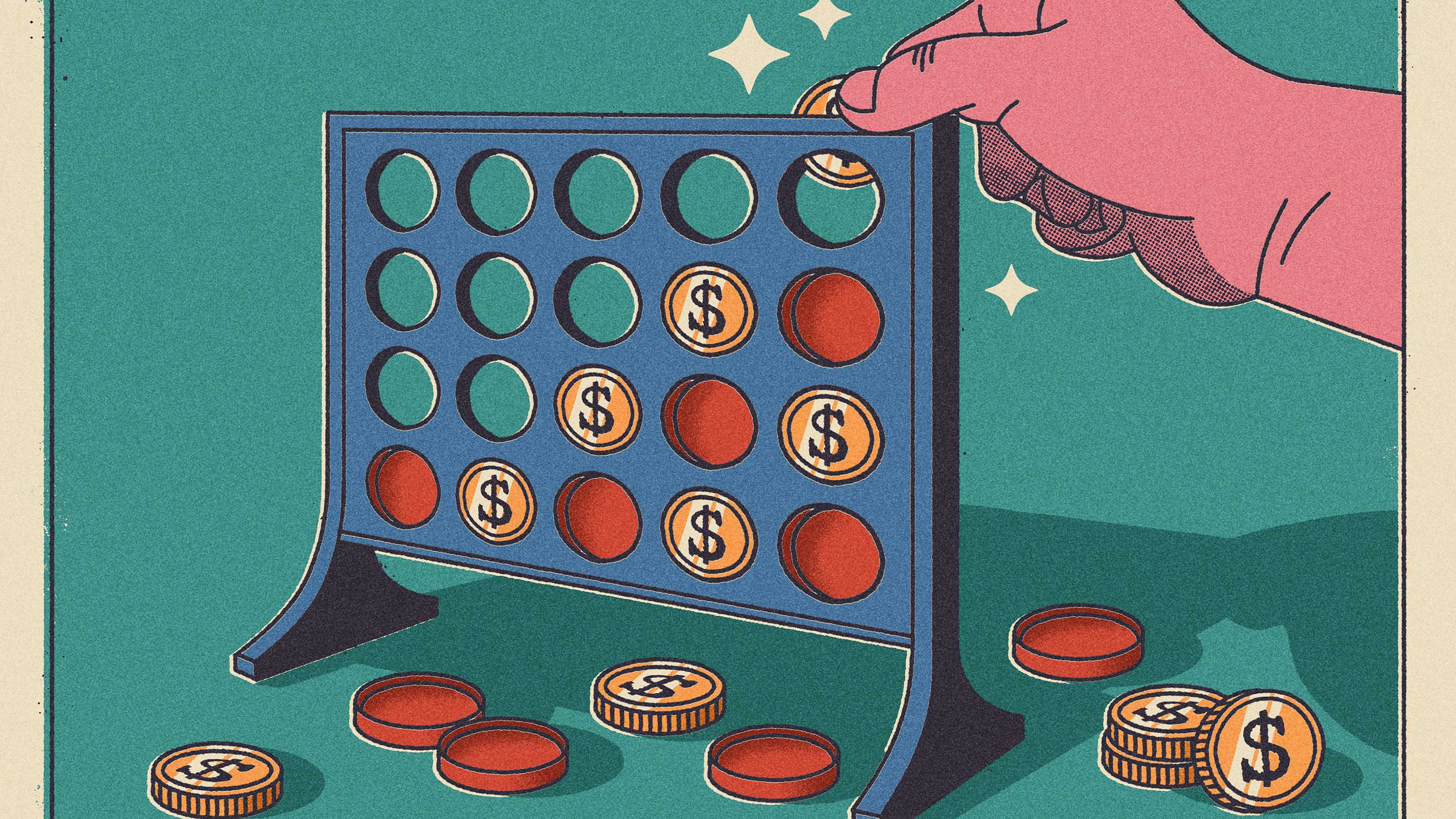My Two-Year Portfolio Performance Report
After a couple of years of investing with an audience, I've gained more than $69,000, but am slightly lagging my benchmark.

It has been almost two years since I launched my invest-in-public experiment, allowing Kiplinger’s readers to monitor and assess my trades. So it’s time for a performance report, which is decidedly mixed.
On the bright side, my Practical Investing portfolio, which started with $189,998, is now worth $259,167. That represents a 36% profit, which leaves me slightly behind my benchmark, a version of the exchange-traded Vanguard Total Market Index fund (symbol VTI) that takes into account when I made my purchases. The fund has returned 38% (results are through October 4).
A handful of my stocks have produced exceptional results. Spirit Airlines (SAVE) soared 149%, and Seagate Technology (STX) jumped 110%. Dover (DOV) gained 49%; American Capital (ACAS), 54%; KKR Financial (KFN), 47%; and Johnson & Johnson (JNJ), 43%. The results are even better than they seem because I’ve owned most of these stocks for less than two years.
From just $107.88 $24.99 for Kiplinger Personal Finance
Become a smarter, better informed investor. Subscribe from just $107.88 $24.99, plus get up to 4 Special Issues

Sign up for Kiplinger’s Free Newsletters
Profit and prosper with the best of expert advice on investing, taxes, retirement, personal finance and more - straight to your e-mail.
Profit and prosper with the best of expert advice - straight to your e-mail.
But I’ve made mistakes, too. My biggest was a doozy: Schnitzer Steel (SCHN), which I sold for a 44% loss. I also have an unrealized loss of 18% on Acacia Research (ACTG). Corning (GLW), Intel (INTC) and Stone Energy (SGY) have merely inched forward, while the overall market has leapt ahead.
I could have held on to Schnitzer a little longer in hopes of a bounce. But because my portfolio is in a taxable account, I wanted to sell before year-end. At this time of year, it’s smart to trigger losses to offset gains. Doing so reduces your tax bill for the year and lets you keep more profit for yourself (see 4 Smart Year-End Moves to Trim Your 2013 Tax Bill ). Of course, you shouldn’t unload a stock that you still want to own, but I had already decided that Schnitzer was a mistake.
Another boneheaded move was my decision to sell Lockheed. I earned a 30% profit on the stock, but since I sold it, Lockheed has returned another 41% (including dividends). Shortly after I sold, Lockheed shares dipped by 10% and were every bit as cheap as they were when I first invested in the company (based on the stock’s PEG ratio — that is, price-earnings ratio divided by the company’s projected earnings-growth rate). I briefly considered repurchasing Lockheed, but I was enamored with the idea of buying something new. So what did I do? I bought Acacia, which makes money by helping companies enforce their patent claims. In hindsight, the swap looks insanely stupid.
Cutting Risk
I also left money on the table by selling half of my holding in Spirit Airlines after hitting a 100% gain. But that move troubles me less. The reason: I was making a strategic decision to take profits and reduce my risk in one stock. Today, Spirit accounts for 7% of my portfolio, slightly more than it did when I first bought it.
Incidentally, I keep a single share of all the stocks I sell. This is something I do to force myself to review past decisions to see whether the sales were smart or ill-advised. It may seem strange to create a device that forces you to face your errors, but I do that for two reasons. First, this column is all about teaching the ins and outs of stock selection and trading. If I only crowed about my successes, I’d be a bad teacher. Every investor makes mistakes; the trick is to make more good decisions than bad ones.
Second, it’s important to remain humble if you want to be a good investor. But that’s tough when a bull market keeps handing you double-digit returns. Too often, investors think they’re brilliant, even when they know that a rising tide lifts all boats. Success can turn careful investors into cocky investors, likely to trade too much and investigate too little. And that increases the chance that they’ll violate Warren Buffett’s number-one rule: Don’t lose money.
Profit and prosper with the best of Kiplinger's advice on investing, taxes, retirement, personal finance and much more. Delivered daily. Enter your email in the box and click Sign Me Up.

-
 Stocks Extend Losing Streak After Fed Minutes: Stock Market Today
Stocks Extend Losing Streak After Fed Minutes: Stock Market TodayThe Santa Claus Rally is officially at risk after the S&P 500's third straight loss.
-
 What Bilt Cardholders Need to Know as Wells Fargo Exits the Program
What Bilt Cardholders Need to Know as Wells Fargo Exits the ProgramA major shake-up in the Bilt Rewards program could affect your credit card, rent rewards and points strategy heading into 2026.
-
 3 Major Changes to the Charitable Deduction in 2026
3 Major Changes to the Charitable Deduction in 2026Tax Breaks About 144 million Americans might qualify for the 2026 universal charity deduction, while high earners face new IRS limits. Here's what to know.
-
 The Most Tax-Friendly States for Investing in 2025 (Hint: There Are Two)
The Most Tax-Friendly States for Investing in 2025 (Hint: There Are Two)State Taxes Living in one of these places could lower your 2025 investment taxes — especially if you invest in real estate.
-
 The Final Countdown for Retirees with Investment Income
The Final Countdown for Retirees with Investment IncomeRetirement Tax Don’t assume Social Security withholding is enough. Some retirement income may require a quarterly estimated tax payment by the September 15 deadline.
-
 Vanguard Is 50! Here's How It Has Made Investing Better
Vanguard Is 50! Here's How It Has Made Investing BetterVanguard was established by John C. Bogle in May 1975, and the fund manager's impact on investing has been revolutionary.
-
 I Have $20,000 to Invest. What Should I Do?
I Have $20,000 to Invest. What Should I Do?We asked a financial expert to weigh in on where to invest $20,000.
-
 How to Master Index Investing
How to Master Index InvestingIndex investing allows market participants the ability to build their ideal portfolios using baskets of stocks and bonds. Here's how it works.
-
 16 Low-Cost ETFs to Buy
16 Low-Cost ETFs to BuyExpense ratios for index funds have declined in recent years, making them a cheap investing strategy to consider. Here are 16 low-cost ETFs to consider.
-
 How to Beef Up Your Portfolio Against Inflation
How to Beef Up Your Portfolio Against Inflationinvesting These sectors are better positioned to benefit from rising prices.
-
 Taxable or Tax-Deferred Account: How to Pick
Taxable or Tax-Deferred Account: How to PickInvesting for Income Use our guide to decide which assets belong in a taxable account and which go into a tax-advantaged account.